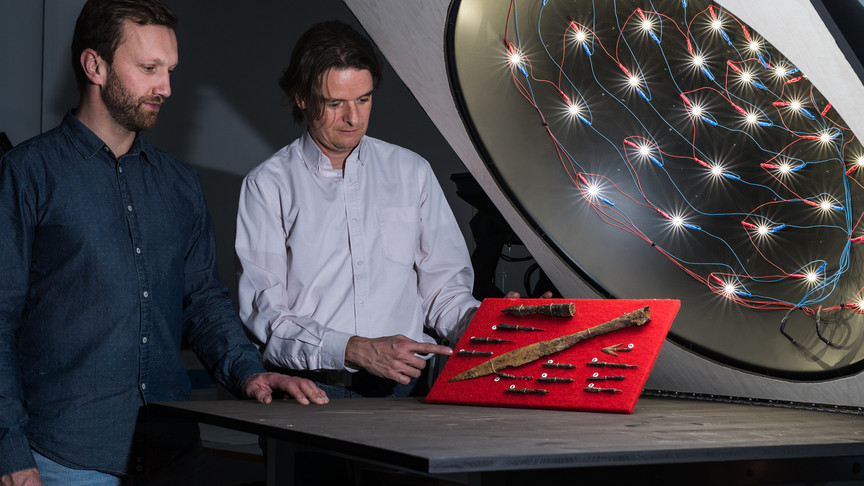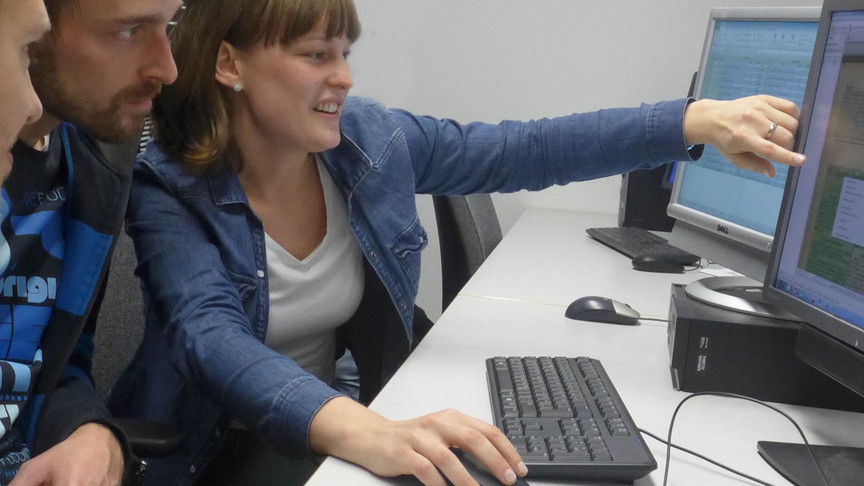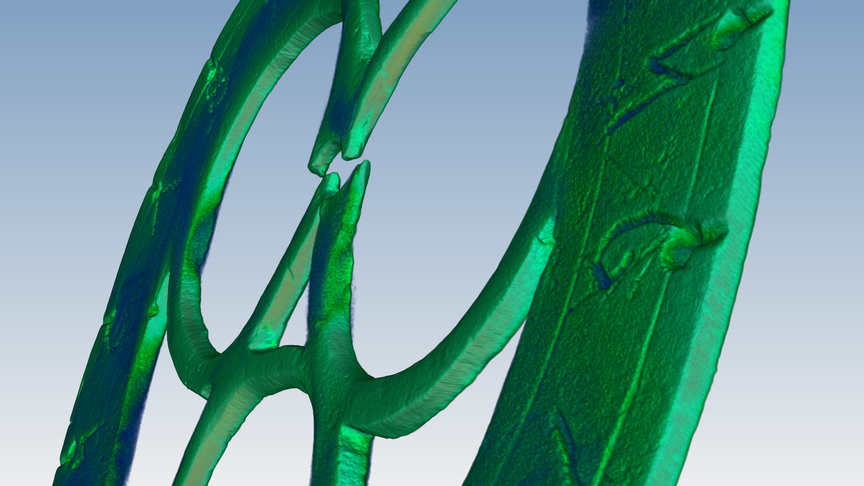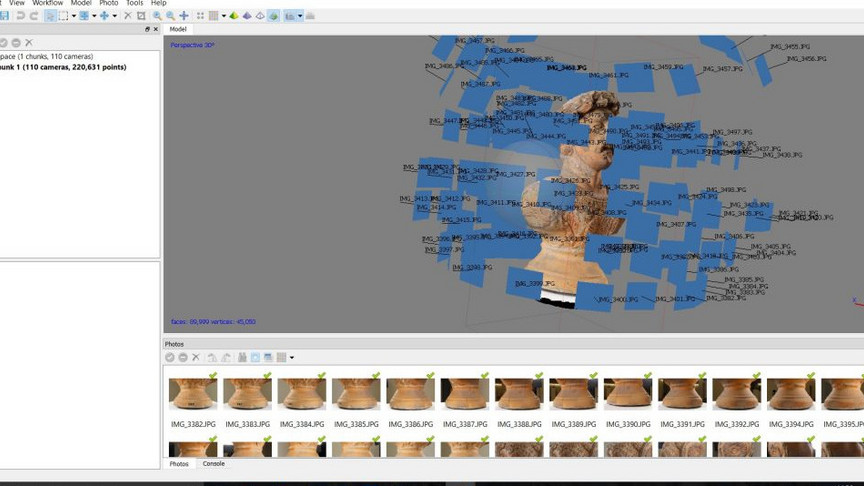Cultural Heritage Digitization Lab
The laboratory is operated at the University of Passau and is run by the Chair of Digital Humanities. It sees itself as a scientific development, experimentation and project space for the digitization and digital valorisation of cultural heritage and as an interface between research, teaching and practice.
Possibilities:
- Digitization of cultural artefacts from 3 mm up to 1.5 m
- in 3D: photogrammetry, laser scan, strip light scan
- in 2.5D: Reflectance Transformation Imaging (enhancement of the surface structure)
- in 2D: photography; book scan, multispectral
- Digitization of texts
- Text recognition
- Text coding
- Analysis and visualisation of semi-structured and structured data
- Web publishing
- Digitization of monuments outside the laboratory with cameras and drone
Equipment
The lab stations can be used at the Windows computer workstations on site.
![[Translate to Englisch:] Reprostation](/fileadmin/_processed_/f/3/csm_Reprostation_2021_db689178bb.jpg)
The digitization of objects using digital photography is a frequently used process, particularly in archives and museums.
A high-resolution digital SLR camera (Canon EOS 6D 50 MP) and LED lights from the field of studio photography are installed in the lab. Further equipment (e.g. grey and colour cards) is available.
![[Translate to Englisch:] Fotostudio](/fileadmin/_processed_/1/f/csm_Fotografie_2_a6d9e3686e.jpg)
A wide range of equipment is available for photographic work, enabling the realisation of demanding projects in both stationary and mobile settings:
- Cameras: Canon EOS 100 D, Canon EOS 6D, Canon EOS 5DS R (Canon lenses: 50mm, 100mm, 18mm); Nikon D3300 (Nikon lens 18-55mm)
- Accessories: tripods, 6 Walimex spotlights (daylight LEDs, dimmable) with diffuser bonnets, pop-up light cube (75x75x75cm), various backgrounds (cardboard, fabrics in blue and green), shooting table, LED surface lamps
![[Translate to Englisch:] Photogrammetrie](/fileadmin/_processed_/a/0/csm_Photogrammetrie_Screenshot_e9c9d434f8.png)
The photogrammetry method enables the creation of three-dimensional object digitizations using the medium of photography. Serial images are calculated into point clouds or triangular meshes using Agisoft software, which are combined with the photographed surface texture. The result is a digital representation of the object as a 3D model.
![[Translate to Englisch:] Drohne DJI Mavic Air 2](/fileadmin/_processed_/9/1/csm_Drohne_DJI_Mavic_Air_2_e7bb24beb2.jpg)
The DJI Mavic Air 2 has a camera with video (4K) and photo (12/48MP) function, a take-off weight of 570 g and a maximum flight time of 30 minutes, three-axis stabilisation, obstacle avoidance in 3 directions and is therefore particularly suitable for use in the field for photo and video recordings of larger monuments.
The virtual reality headset with two touch controllers and inside-out tracking with LCD panel (2560x1440 pixels) is suitable for use in visualising computer simulations, virtual rooms, 3D models or 360-degree videos. The software supplied is suitable as an interface for configuring your own VR rooms.
![[Translate to Englisch:] RTI](/fileadmin/_processed_/1/4/csm_RTI-Ansicht_98ab516860.png)
![[Translate to Englisch:] RTI-Dom](/fileadmin/_processed_/f/7/csm_RTI_Dom_f1c092457d.jpg)
![[Translate to Englisch:] RTI Freihand](/fileadmin/_processed_/0/5/csm_RTI_Freihand_ab804c1a66.jpg)
Reflectance Transforming Imaging is suitable for flat objects with a relief structure - coins, for example. The RTI method enables an optically exaggerated reproduction of the surface texture, whereby object details are emphasised plastically and thus become easier to read. Work is carried out with a fixed camera position, but with variable incidence of light. The surface is reconstructed using software based on the reflections and the photographically captured texture.
Available are
- self-built RTI dome (for explanation: visit.uni-passau.de/de/buildings/ueber-das-projekt/digitalisierung/ueber-das-projekt/digitalisierung/rti-dome)
- RTI freehand
![[Translate to Englisch:] MSI](/fileadmin/dokumente/fakultaeten/geku/lehrstuehle/rehbein/Illustration/Lab/MSI_.jpg)

The MSI process can be used to make artefacts hidden beneath the surface of a text or image medium visible (palimpsestic texts, underpaintings, etc.). The device is only available to a defined group of users after special training.
![[Translate to Englisch:] 3D-Streifenlichtscanner](/fileadmin/_processed_/2/2/csm_Streifenlichtscanner_378db399ca.jpg)
The David is particularly suitable for recording the surface properties of smaller objects (30-500mm). Methodically, a light stripe pattern is projected onto the object to be inspected, whereby two industrial cameras mounted in parallel record the projected pattern. The software recognises the distorted stripe pattern from the camera perspective and calculates the surface quality based on the distortions. Several of these images provide a complete description of the surface.
![[Translate to Englisch:] 3D-Blaulichtscanner](/fileadmin/_processed_/1/1/csm_Artec_Spider_e724b44ca2.jpg)
The high-resolution hand-held scanner is used professionally in the fields of industry, medicine and heritage conservation. In the digitisation of cultural assets, it is particularly suitable for scanning very small immobile objects (with a point accuracy of 0.05 mm) in the field of architecture and in museums, but it can also be used for scanning in studio situations. The software supplied with the device enables a closed work chain in the digitization process.
![[Translate to Englisch:] OCR-Software im Labor für Kulturgutdigitalisierung [Translate to Englisch:] OCR-Software im Labor für Kulturgutdigitalisierung](/fileadmin/_processed_/8/9/csm_OCR_c40b1af544.jpg)
Optical Character Recognition (OCR) is an automatic text recognition process that is used to transform texts and documents that are available in digital image formats into computer-readable characters. This enables digital searches, processing and annotation of texts. At the chair, we use OCR technology depending on the project requirements, for example with the help of tesseract, calamari and, as an equivalent for handwritten texts, handwritten text recognition (HTR) with Transkribus.
![[Translate to Englisch:] Content Management System Omeka](/fileadmin/_processed_/3/1/csm_ContentManagementSystem_Omeka_116c5f2545.png)
The Omeka content management system, which specialises in the quick and easy creation of online exhibitions, is software that is used for the professional publication of results from digitization processes. The system offers numerous expansion options for eHumanities projects, including the Neatline module for creating narrative presentations including texts, objects, maps and a timeline. Omeka with Neatline was used, for example, in the chair's field research project on the First World War.
If you need equipment for use outside the laboratory as part of a course, you can borrow it by prior arrangement. To do this, fill out a loan slip in the presence of a member of staff from the DH department. Please make sure to record EVERY item borrowed (e.g. also batteries, cables, adapters, bags, etc.).
Contact
kulturgutdigital@uni-passau.de
Nina Kunze
HK 16, Raum 306/307
Tel.: +49 851 509 3454
Follow us on X: Kulturgutdigital@Passau
Online library for the digitization of cultural assets
Literature on the subject of cultural asset digitization can be found in the online library on cultural asset digitization

Funding
The Cultural Heritage Digitization Lab was established with the support of, among others
- the European Regional Development Fund in the context of the Czech-German Digital Humanities Laboratory project for historical field research

- of the "Interreg V-A Austria-Bavaria" programme as part of the project "Virtual network systems and information technologies for the touristic development of cultural heritage"
- and the Dr Hans-Karl Fischer Foundation.


![[Translate to Englisch:] Kulturgutdigitalisierung](/fileadmin/_processed_/2/c/csm_Lab_Gassner_Rehbein_1c333a9a75.jpg)
![[Translate to Englisch:] Kulturgutdigitalisierung](/fileadmin/_processed_/2/c/csm_Lab_Gassner_Rehbein_3aef99bb09.jpg)

![[Translate to Englisch:] Studierende im Labor für Kulturgutdigitalisierung](/fileadmin/_processed_/0/8/csm_DH-Lab-Seminar1Digitalisierung_crop3_4f4074f9a4.jpg)
![[Translate to Englisch:] Studierende im Labor für Kulturgutdigitalisierung](/fileadmin/_processed_/0/8/csm_DH-Lab-Seminar1Digitalisierung_crop3_75074dd269.jpg)

![[Translate to Englisch:] RTI](/fileadmin/_processed_/1/4/csm_RTI-Ansicht_d446b91fa8.png)
![[Translate to Englisch:] RTI](/fileadmin/_processed_/1/4/csm_RTI-Ansicht_abf10706fb.png)








